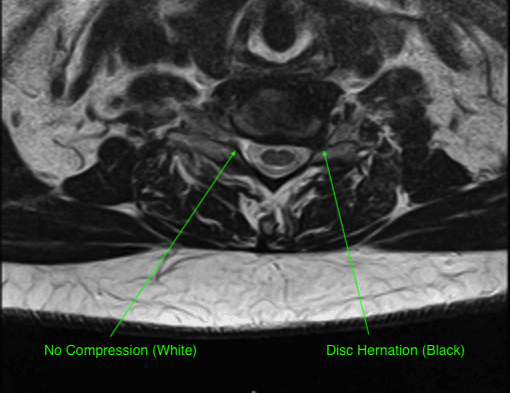Cervical Radiculopathy
Guide to Understanding Spinal Conditions
Cervical Radiculopathy
Cervical radiculopathy affects the nerves in your neck. It occurs when a nerve becomes irritated or pinched—often due to issues with the discs or bones in your cervical spine—resulting in pain, numbness, or weakness that can radiate from your neck down your shoulder, arm, and hand.
Overview
Think of the nerves in your neck as electrical wires sending signals between your brain and body. When these wires function normally, you have normal movement and sensation. However, if something presses on or irritates these nerves, the signals become disrupted—this is the essence of cervical radiculopathy.
Common Causes
The most frequent causes of cervical radiculopathy include:
- Herniated Disc: A disc bulges or ruptures, pressing on nearby nerves.
- Bone Spurs (Osteophytes): Extra bone growths can form with age and pinch nerves.
- Degenerative Disc Disease: Disc wear reduces space around nerves, leading to stenosis.
Case Example

Left-Sided Disc Herniation C6-7 Compressing the Left C7 Nerve Root
- Worsening Neck Pain
- Left-sided Arm Pain
- Left Tricep Weakness
Symptoms
Symptoms can vary depending on the affected nerve, but they often include:
- Pain: Sharp or burning neck pain radiating down the arm.
- Numbness or Tingling: In the shoulder, arm, or hand.
- Weakness: Particularly in the muscles of the arm or hand.
Treatment Options
Treatment depends on severity. Conservative methods are typically recommended when symptoms are mild, recent, or gradually improving:
- Physical therapy and targeted exercises.
- Medications (e.g., NSAIDs) to manage pain and inflammation.
- Corticosteroid injections for more severe inflammation.
- Activity modification and, in some cases, bracing.
Surgery is considered if pain is severe, long-standing, unresponsive to conservative care, or accompanied by weakness.
Surgical Treatments
Possible surgical options include:
- Anterior Cervical Discectomy & Fusion (ACDF): Removing the damaged disc and fusing the vertebrae.
- Hybrid ACDF + Cervical Disc Replacement (CDR): Combines stability with motion preservation.
- Cervical Disc Replacement: Replacing the affected disc to maintain flexibility.
- Foraminotomy: Performed via Minimally Invasive or Endoscopic technique to open up the space for the exiting nerve.
Patient Reported Outcomes
Studies and patient feedback often show notable improvements in pain relief and overall function post-surgery. These outcomes guide clinical decision-making to ensure the best care path for each individual.
Take the Next Step
If you’re experiencing symptoms of cervical radiculopathy, reach out to our expert team for a comprehensive evaluation and personalized treatment plan.
Contact Us Refer a Patient